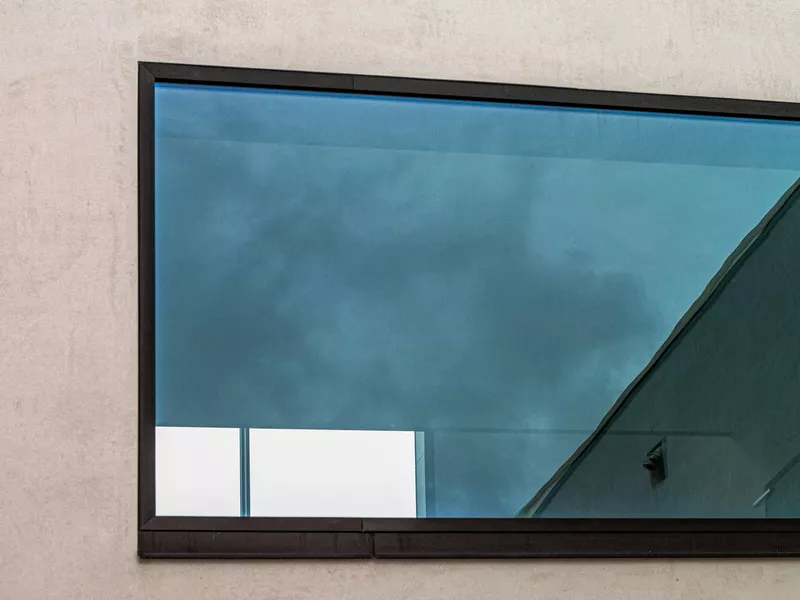English 




Views: 222 Author: Astin Publish Time: 2025-02-18 Origin: Site



Content Menu
● Understanding Aluminum Foil's Properties
● Benefits of Using Aluminum Foil on Windows
>> Heat Insulation and Reflection
>> Privacy and Glare Reduction
● Best Practices for Applying Aluminum Foil
>> Placement
● Additional Applications of Aluminum Foil on Windows
● Environmental Considerations
● More Detailed Applications of Aluminum Foil
>> Reflective Gardening Techniques
● Safety Precautions When Using Aluminum Foil
>> Avoid Direct Contact With Food
>> Monitor Temperature Changes Regularly
● FAQ
>> 1. Does aluminum foil really keep heat out?
>> 2. Can I use regular kitchen-grade aluminum foil?
>> 3. Will using aluminum foil damage my windows?
>> 4. How long can I leave aluminum foil on my windows?
>> 5. Are there alternatives to aluminum foil for window insulation?
Aluminum foil is a common household item, primarily recognized for its utility in cooking and food storage. However, its application extends beyond the kitchen, particularly in home insulation and temperature regulation. This article explores the various uses of aluminum foil on windows, its benefits, potential drawbacks, and practical tips for effective usage.
Aluminum foil is a thin sheet made from aluminum metal. Its reflective properties make it an excellent barrier against heat transfer. When applied to windows, aluminum foil can reflect approximately 90-96% of radiant heat, which is particularly beneficial during both summer and winter months. In summer, it reflects sunlight away from the windows, helping to maintain cooler indoor temperatures. Conversely, in winter, it can reflect indoor heat back into the room, minimizing heat loss through the glass.

One of the primary reasons homeowners apply aluminum foil to their windows is for its ability to insulate against heat. During hot weather, sunlight entering through windows can significantly increase indoor temperatures. By applying aluminum foil to the exterior of windows, homeowners can reflect sunlight away from the glass surface, preventing heat from entering the home. This reduces reliance on air conditioning systems and can lead to lower energy bills.
Compared to specialized window films or treatments, aluminum foil is a cost-effective solution for improving energy efficiency. A roll of aluminum foil is inexpensive and accessible for most homeowners. This makes it an attractive alternative for those looking to manage indoor temperatures without incurring significant costs.
Aluminum foil also serves as a privacy barrier when applied to windows. It effectively blocks visibility from outside while allowing light to filter through in a limited manner. Additionally, it helps reduce glare caused by direct sunlight streaming into homes, making it useful for rooms where glare can be disruptive.
Another advantage of using aluminum foil on windows is its ability to block harmful ultraviolet (UV) rays from the sun. Prolonged exposure to UV rays can damage furniture and flooring inside the home; thus, aluminum foil can help protect these items by reducing UV penetration.
To maximize the effectiveness of aluminum foil on windows, consider the following best practices:
For optimal results, place aluminum foil on the exterior side of windows rather than the interior. This placement allows for better reflection of solar heat before it enters the home and prevents heat buildup between the glass and the foil.
Regular kitchen-grade aluminum foil may not provide adequate insulation over time. Instead, opt for heavy-duty or thicker varieties that offer better durability and insulation properties against outdoor elements.
For improved insulation performance, consider placing cardboard behind the aluminum foil. This creates an air gap that enhances thermal resistance while protecting the glass from excessive heat.
Use tape or adhesive specifically designed for metal surfaces to secure the edges of the aluminum foil. Ensure that there are no gaps where light can enter; this will enhance both insulation and privacy.
While we have discussed some primary benefits of using aluminum foil on windows, there are additional applications worth considering:
In situations where natural disasters such as hurricanes or severe storms are anticipated, covering windows with aluminum foil can provide an extra layer of protection against flying debris. The foil acts as a barrier that can help prevent shattering glass from causing injury or damage inside your home.
Aluminum foil can also be utilized in various crafts or DIY projects related to window decoration or functionality. For example, you could create decorative window coverings by combining aluminum foil with other materials such as fabric or paper to achieve a unique look while still benefiting from its reflective properties.
In some cases, homeowners may desire softer lighting in certain rooms without blocking out all natural light completely. By crumpling aluminum foil and placing it behind sheer curtains or window screens, you can diffuse sunlight effectively while still maintaining a degree of brightness in your living space.

While there are numerous benefits to using aluminum foil on windows, there are also potential drawbacks that homeowners should consider:
Aluminum foil may not be visually appealing when used on windows. Its shiny surface can create an industrial look that some may find unattractive. Homeowners should weigh aesthetic preferences against functional benefits when deciding whether to use this method.
If not applied correctly or monitored regularly, prolonged exposure to heat buildup can lead to thermal stress issues with window glass. To mitigate this risk, ensure proper installation techniques are followed and periodically check for any signs of damage.
Using aluminum foil as a window covering is often seen as a temporary solution rather than a permanent fix for insulation issues. Homeowners may want to explore more permanent options such as specialized window films or thermal curtains if they seek long-term solutions.
When discussing materials like aluminum foil, it's essential to consider their environmental impact as well:
Aluminum is highly recyclable; however, many people do not realize that used aluminum foil can be recycled if cleaned properly before disposal. Ensuring that no food residue remains increases its chances of being recycled effectively rather than ending up in landfills.
By using aluminum foil on windows to improve energy efficiency in homes, homeowners contribute positively towards reducing overall energy consumption within their households—leading not only to lower utility bills but also decreased reliance on fossil fuels used for electricity generation.
In addition to insulating homes against unwanted temperature fluctuations indoors through window applications—aluminum foils have found their way into gardening practices too! Gardeners often utilize reflective surfaces like shiny foils around plants—especially those requiring ample sunlight exposure—to enhance growth rates by directing more light towards them throughout daylight hours!
This technique works particularly well in shaded areas where natural sunlight might struggle reaching certain plants due either dense foliage overhead or nearby structures obstructing direct rays from hitting ground level directly below them—thus maximizing photosynthesis efficiency!
For those interested in sustainable cooking methods—aluminum foils play an integral role when constructing solar ovens! By lining cardboard boxes with reflective sheets made out of this versatile material—individuals create efficient cooking devices powered solely by sunlight!
These DIY solar ovens harness solar energy efficiently—allowing users cook meals without relying heavily upon traditional fuel sources like gas/electricity—thus promoting eco-friendly practices while enjoying delicious homemade dishes!
Artists have also explored creative uses for materials such as aluminium foils within their installations! From sculptures reflecting light beautifully across spaces—to intricate designs crafted entirely out of layered sheets—these artistic endeavors showcase how versatile this material truly is beyond mere household applications!
By experimenting with textures created through folding/crumpling techniques—artists breathe life into otherwise mundane objects transforming them into stunning visual experiences captivating audiences everywhere!
While utilizing aluminium foils offers numerous advantages—it's crucial always prioritize safety considerations during application processes:
Although aluminium itself poses minimal health risks when used appropriately—caution must be exercised regarding direct contact between food items & uncoated surfaces made solely from this material (especially acidic foods).
Studies suggest potential leaching occurs under certain conditions leading some experts recommend opting instead non-reactive alternatives (like parchment paper) whenever possible especially during extended cooking periods involving high temperatures!
As previously mentioned—improper installation could lead thermal stress issues resulting shattered glass panes over time! Thus regular monitoring becomes essential ensuring no excessive buildup occurs between layers created by applying aluminium foils onto surfaces directly adjacent one another without proper ventilation pathways established beforehand!
In summary, aluminum foil serves multiple functions when applied to windows: effective heat insulation, cost savings on energy bills, privacy enhancement, glare reduction, and UV protection are just some benefits worth noting. While it presents some aesthetic challenges and potential risks regarding glass damage if improperly used, its advantages make it a viable option for many homeowners seeking quick and inexpensive ways to manage indoor temperatures.
As with any home improvement strategy, it's essential to consider both advantages and disadvantages before implementing changes.

Yes! Aluminum foil reflects sunlight away from your home during summer months while retaining indoor heat during winter months, making it effective for temperature regulation.
While regular kitchen-grade aluminum foil can work, using heavy-duty or thicker varieties provides better insulation and durability against outdoor elements.
When applied correctly (preferably on the outside), aluminum foil should not damage your windows; however, prolonged use without monitoring could lead to thermal stress issues.
Aluminum foil can be left on windows seasonally; however, it's advisable to check periodically for any wear or damage.
Yes! Reflective window films or thermal curtains provide similar benefits without compromising aesthetics or risking potential glass damage.
[1] https://www.housedigest.com/1360647/aluminum-foil-lining-windows-mistake/
[2] https://www.weiye-aluminium.com/does-aluminum-foil-on-windows-keep-the-cold-out.html
[3] https://www.ee.cityu.edu.hk/~gchen/pdf/Writing.pdf
[4] https://chemistry.stackexchange.com/questions/104753/aluminium-foil-on-windows-what-is-the-residue-and-how-to-remove-it
[5] https://www.chaluminium.com/top-8-functions-of-aluminum-foil-on-windows
[6] https://gist.github.com/allenfrostline/c6a18277370311e74899424aabb82297
[7] https://www.h2ouse.org/aluminum-foil-on-windows/
[8] https://alfipa.com/articles/insulation-with-aluminium-foils/
Top Aluminum Furnitures Manufacturers and Suppliers in Czech Republic
Top Aluminum Furnitures Manufacturers and Suppliers in Poland
Top Aluminum Furnitures Manufacturers and Suppliers in Belgium
Top Aluminum Furnitures Manufacturers and Suppliers in Finland
Top Aluminum Furnitures Manufacturers and Suppliers in Denmark
Top Aluminum Furnitures Manufacturers and Suppliers in Greece
Top Aluminum Furnitures Manufacturers and Suppliers in Portugal
Top Aluminum Furnitures Manufacturers and Suppliers in Austria
Top Aluminum Furnitures Manufacturers and Suppliers in Norway
Top Aluminum Furnitures Manufacturers and Suppliers in Sweden
